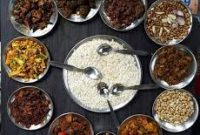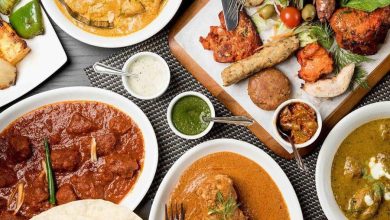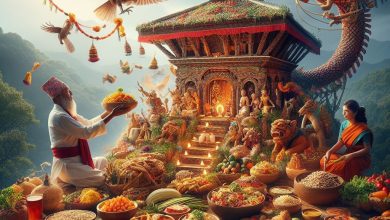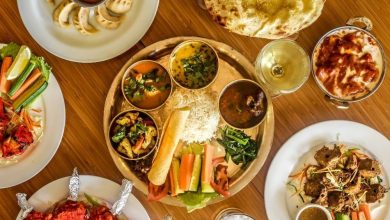Meat is famous in Nepal:
Goat meat, or mutton, is one of the most well-known and often eaten foods in Nepal. In Nepalese cuisine, goat meat is a common source of protein and is utilized in a variety of traditional recipes. It is frequently cooked as curries, grills, or fillings for momos, or dumplings, which are a common street snack in Nepal. Furthermore, meat from chickens and buffaloes is also widely consumed in Nepal.
The popularity of particular meats may differ by location because Nepal is a diversified country with a wide variety of regional cuisines. Buffalo meat is particularly well-liked in some regions of Nepal, particularly the Terai area, where it’s frequently used as an ingredient in meals like sukuti, which is made from dried buffalo flesh. It’s important to remember that different communities and ethnic groups in Nepal may have varying dietary choices and meat availability.
Goat and chicken are the most popular and extensively consumed meats in Nepal.
Another common meat in Nepalese cooking is chicken, which is used in a variety of recipes such curries, fried foods, and grilled meats. Buffalo meat is also rather prevalent in Nepal, especially in some areas, along with goat and chicken. In Nepal’s Terai area, buffalo meat is utilized in recipes like sukuti, or dried buffalo meat.
Because every community in Nepal has its unique dietary customs and culinary traditions, preferences for particular meats might range by area and ethnic group. Goat and chicken are still among the most popular meats in the nation, though.
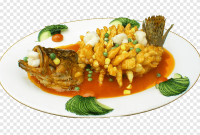
Is food expensive in Nepal?
The price of food in Nepal can vary significantly based on a number of variables, such as where you eat, the kind of restaurant or eatery, and the meals you select. Affordable meal alternatives are generally available in Nepal, especially when compared to many Western nations. Here are some things to think about:
- Local Eateries: Meals from little neighborhood eateries and food carts are frequently quite cheap. Traditional Nepalese foods like momo (dumplings) and dal bhat (lentil soup with rice) are reasonably priced.
- Tourist Areas: A greater variety of dining alternatives, including tourist-oriented eateries, can be found in popular tourist destinations like Lakeside in Pokhara and Thamel in Kathmandu. Even while prices in some places might be a little higher, they are still often fair by global standards.
- Fine Dining: In Nepal, upscale and foreign dining establishments can be more costly, with costs more in line with what one may anticipate from a Western nation.
- Accommodation Packages: Meal packages are sometimes included in the price of lodging at hotels and guesthouses, and they may be quite economical.
- Food Choices: The dishes you choose will also affect how much you spend on meals. Local Nepalese cuisine is typically less expensive than foreign meals.
It’s crucial to remember that living expenses in Nepal can differ greatly between urban and rural locations, especially when it comes to the cost of food. Furthermore, prices may change over time as a result of things like inflation, travel habits, and prevailing economic conditions. Overall, even if there are some reasonably priced eating alternatives in Nepal, it’s a good idea to plan ahead and look into a range of dining establishments to meet your needs both financially and aesthetically.

What is lunch in Nepal?
Like many other nations, Nepal allows lunchtime variations based on personal tastes and regional influences. But a normal Nepali lunch frequently includes the following items:
- Dal Bhat: The mainstay of the Nepali cuisine, daal bhat is often served at lunch. It is composed comprised of steamed rice (bhat) and lentil soup (dal), which is flavored with coriander, cumin, and turmeric. The lentil soup is created using a variety of sorts of lentils. Occasionally, a vegetable curry is served as well.
- Vegetables: In Nepal, lunch usually consists of a selection of vegetable dishes. These might be green beans, potatoes, spinach, cauliflower, or other curried veggies cooked with spices.
- Achar: Achar is a kind of hot pickle prepared with radishes, tomatoes, and mangoes, among other ingredients. It is frequently served as a side dish and gives the meal a sour and spicy flavor.
- Meat or Protein: You could have a meat dish for lunch if you’re not vegetarian. This might be fish, poultry, goat, or buffalo cooked in different curries and styles.
- Roti or Bread: Instead of using rice as a source of carbohydrates, some people in Nepal, particularly in the Terai (southern plains), may eat roti (flatbread) or other varieties of bread.
- Yogurt: Sometimes yogurt is offered as a side dish, a small bowl seasoned with spices like coriander or cumin.
- Green Salad: A typical side dish is a straightforward salad consisting of cucumbers, tomatoes, and onions that is occasionally seasoned with a dash of salt or lemon juice.

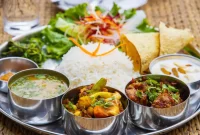
The use of spices and careful taste balance characterize Nepali cuisine, and many dishes are made using unusual combinations of ingredients and seasonings. Dal bhat is a staple and important part of a Nepali lunch, however the exact components included might vary based on the area and personal tastes.
